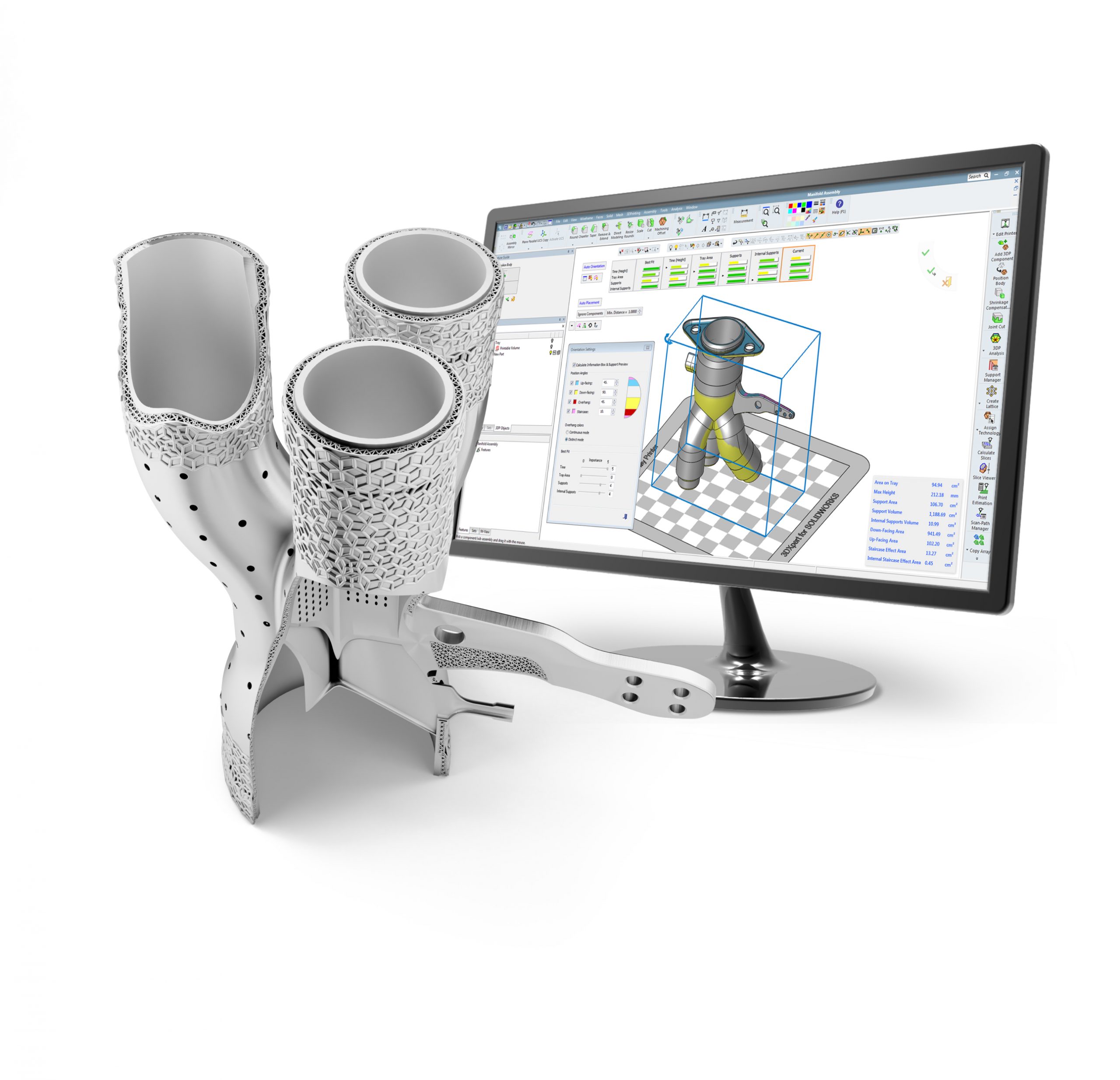A stronger future, layer by layer: How next-generation software will drive adoption of metal AM
The growth of metal Additive Manufacturing has been held back, believes Oqton's Dr Ben Schrauwen, by a specific set of challenges: repeatability, cost, and the need for a high level of expertise. This article considers how next-generation software solutions that leverage Artificial Intelligence, cloud computing, and hybrid modelling are improving metal AM workflows. By addressing all three challenges, Schrauwen believes that metal AM can achieve faster and deeper adoption, leading to a more efficient and innovative future. [First published in Metal AM Vol. 9 No. 2, Summer 2023 | 10 minute read | View on Issuu | Download PDF]
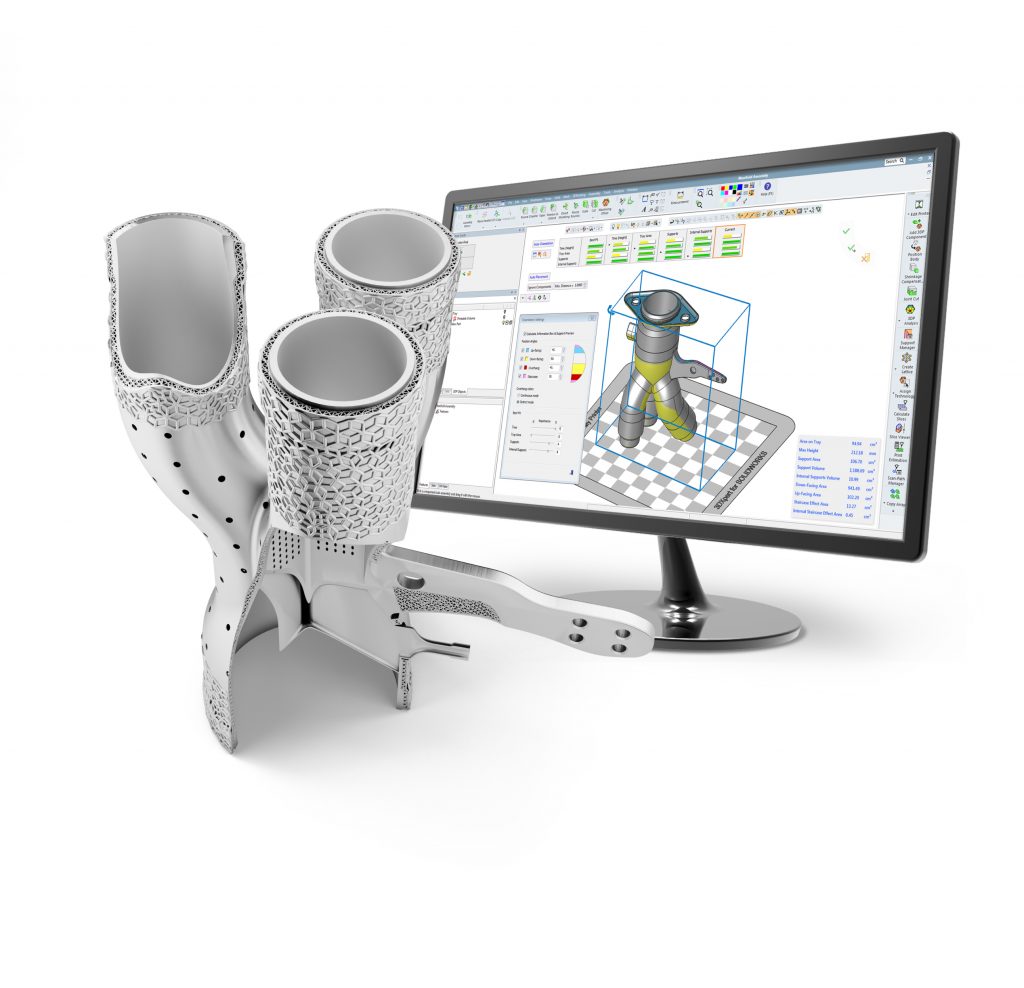
The benefits of Additive Manufacturing are undeniable. The technology creates opportunities for part consolidation and lightweighting, incorporating organic structures that are impossible to reproduce with conventional techniques. It opens the door to advanced customisation and small batch production, even batches of one. It enables rapid prototyping and faster iterations during design. It reduces waste, inventory stock, and energy consumption. It is rapidly maturing, becoming more easily available, and is being adopted for growing range of applications.
So why is AM’s growth so slow when it comes to the manufacturing of metal applications? The disparity in market size is very clear. The global metal AM market was valued at $2.5 billion in 2021, while the global plastic AM market was valued at $45.6 billion — nearly twenty times larger than its counterpart [1,2]. Numerous reasons for this disparity come to mind, including perhaps the fact that plastic ‘3D printing’ technology has found a major market in the consumer, hobbyist and SME markets. However, the reasons behind the current state of the metal AM industry aren’t that much of a mystery – metals pose a specific set of challenges in Additive Manufacturing, three of which come to mind immediately:
repeatability, cost, and expertise.
Repeatability
It is important for any manufacturer to be able to reproduce the exact same part on multiple machines, at different locations, and at different times. This requires tight control of numerous variables. Metal AM systems complicate repeatability because builds can be inconsistent.
Many factors contribute to this inconsistency, starting with machine setup, configuration, stability and even environmental variables across the entire build process. All industrial machine calibration can be tricky and time-consuming, but especially so in metal AM. The genealogy of metal powders may also drive greater variability from one part to the next. All of this means it can be challenging to certify that metal AM parts meet specific characteristics.
Cost
In order to facilitate the adoption of AM for metal parts, we have to find ways to decrease the cost per part. Once this is achieved, more business opportunities for different applications will become valid for AM. Metal parts are expensive for many reasons: starting with the cost of the material; the AM machine itself; the highly skilled staff; resources that are needed for serial production; down to the quality and standard certifications that manufacturers often need to provide.
Expertise
Metal AM design, data preparation, build preparation and post-processing have all historically required a relatively high degree of experience and expertise. On the design side, even experts are hesitant about the time and cost associated with part preparation, especially when it comes to the full geometric freedom that allows part consolidation, lightweighting and performance optimisation. As a result, the industry has been dependent on expert users to master the complex Additive Manufacturing process.
Of course, metal AM is relatively new compared to other well-established production technologies. Manufacturers have had many decades to optimise all of the processes related to conventional metal parts production, and institutional knowledge has been steadily accumulated. Adopting a fundamentally different way of making products necessarily involves a great deal of change, and, currently, only a limited number of manufacturers have been willing to take the plunge.
What’s missing from the current situation is a way to tackle all three of these challenges at the same time: equipping manufacturers to improve repeatability; increase cost-efficiency; and make metal AM more accessible to a wider range of professionals.
Conventional manufacturing execution systems (MES) hint at the right idea, but they are simply not designed to take advantage of processes that could help improve the quality of metal AM parts, drastically reduce delivery times, and respond to customer requests more efficiently.
Fortunately, a new generation of software has arrived. These new platforms fully leverage the inherent strengths of metal AM, addressing all of the current challenges and pointing the way to a more efficient and innovative future. Let’s take a look at the ways in which next-generation software will drive faster and deeper adoption of metal AM.
Artificial Intelligence
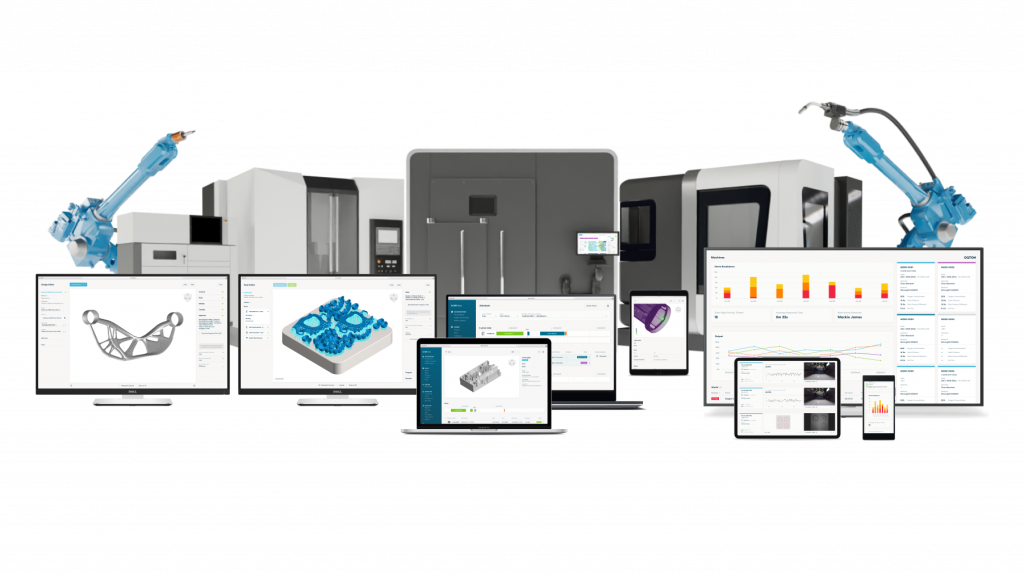
Artificial Intelligence (AI), more specifically machine learning (ML), can dramatically reduce the complexity of the metal AM workflow and help manufacturers get started more easily. When combined in the same software platform, these technologies help pave the way for fast, flexible and, in some cases, entirely autonomous metal AM production.
AI-empowered software is the key to accelerating metal AM because it can streamline and automate many steps within the process, including those typically handled by MES software in addition to repetitive tasks that are done manually. For example, next-generation software with AI can be used to prepare files for a build automatically instead of relying on manual preparation by operators and technicians. Automated file preparation could have a powerful impact on overall workflow. Steps that can be fully automated today include:
Part identification
After design file upload, software has the capability, if needed, to automatically classify it into a pre-defined category, such as ‘dental’ or ‘fixture’. More granular sub-categories are available, of course. This classification determines a sequence of downstream tasks.
Part segmentation
This refers to AI’s ability to identify areas of interest for a given part, such as the teeth in a gear or the location of a target surface or feature. Accurate segmentation helps establish how and where support structures need to be placed, and where labels should automatically be created and positioned.
Part orientation
AI suggests various rotational orientations on the build plate for a part based on similar parts that have been previously built successfully. Orientation can affect build speed, supports, surface finish, and part strength.
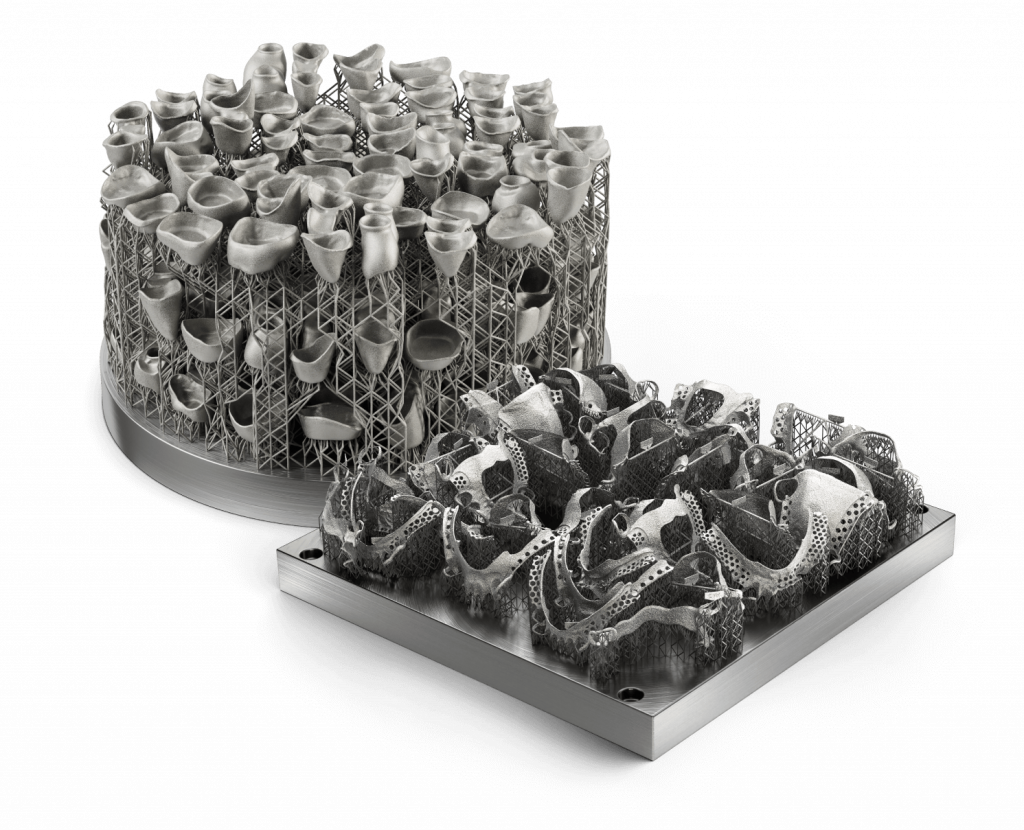
Nesting
Packing as many parts as possible into a metal Additive Manufacturing machine helps increase production volumes and reduce part costs. AI can provide optimised 2D and 3D nesting to boost machine output, including interlocking nesting (Fig. 3)
With AI and ML working under the hood, next-generation software will empower users of all levels of experience to become more productive. This will help bring down the total cost of metal AM workflows and eventually lead to complete production runs optimised for lights-out performance.
Cloud
Next-generation metal AM software is designed to be more modular and service-based, allowing individual components to scale production up or down to suit the manufacturer’s needs. The cloud is critical for this kind of easy scalability.
In fact, the cloud is one of the key technologies of Industry 4.0. It may seem like a simple development, but its impact on manufacturing has been monumental. It ushered in the era of software as a service (SaaS), making it far easier for manufacturers to work on the same files from different sites with only an internet connection and a browser.
This means there is no need to run software on-site, which means you do not have to buy, install, maintain, or upgrade racks of servers, which has an obvious effect of lowering total cost of ownership (TCO). For example, for companies considering metal Additive Manufacturing, the cloud means you can be sure that two parts made at two separate sites will be built from the exact same file, in the exact same way, with the same required machine and material configuration, to ensure consistency and repeatability.
Security
The security of information stored in the cloud is a critical concern for manufacturers using SaaS because the models in metal AM workflows represent extremely valuable intellectual property. To move forward with a next-generation software solution, manufacturers need to be confident this data will remain safe, secure, and private. With the right measures in place, the cloud is often the safest option for storing valuable data. Here are some of the reasons why:
Less burden
Manufacturers are not typically data security experts and adding a full-fledged data security management team would be too expensive. Moving data to the cloud offloads security responsibilities to the SaaS provider. These providers do specialise in backing up files for redundancy as well as protecting data from a wide range of threats.
Control
Not that long ago, the more conservative manufacturers were convinced that local networks and local storage were the only way to know exactly who accessed what data at what time. In reality, cloud platforms offer the same control, access and audit capabilities. Today enterprises large and small use these services, safe in the knowledge they have full insight into who uses the data.
Certifications
Certifications prove that the right security measures are in place. The best-known cloud security certifications are SOC 2, which originated in the US, and ISO 27001, which is popular in Europe. SOC 2, considered the ‘gold standard,’ describes an auditing procedure that ensures service providers manage information securely. Auditors assess the extent to which a SaaS provider ensures security, availability, processing integrity, confidentiality and privacy. Auditors issue a certificate based on their findings.
Encryption
Cloud SaaS providers should encrypt both data in transit (when it moves from a computer to the cloud) and data that is stored. In addition, files should always be encrypted first and stored second, not the other way around.
Hybrid modelling, beyond meshes
Additive Manufacturing creates unprecedented opportunities to design and produce metal parts that push the envelope of innovation, taking advantage of complex lattice structures, triply periodic minimal surfaces (TPMS – a surface that is locally area-minimising when spanning the specific boundaries of shape), infills, weblines, and other organic geometries. These unique structures are what enable designers to create better-performing parts. Designers can pursue lightweighting, part consolidation, topology optimisation, thermal management, and even osseointegration.
So far, the barrier to broader acceptance of complex design techniques has been software. Many solutions can only create a single type of geometric representation, while designing and building high-performing parts requires a combination of geometries. As a result, designers and engineers have had to switch between multiple software solutions to manage different types of geometries into a single part.
Next-generation software is circumventing this issue with hybrid modelling, the capability to accommodate all file formats and geometries in a single solution. Hybrid modelling combines various geometric representations so they can be edited and converted into build instructions from their native format. This means manufacturers can use implicit modelling for complex lattices, solid (CAD or BRep) models for a smooth connection with intakes, meshes for custom parts, or voxel grids for limitless geometrical formulations.
Designers create a part using various native geometries and when the design phase is complete, instructions be sent directly to the metal AM machine from the same application with no need to transfer or translate the data.
Repeatability
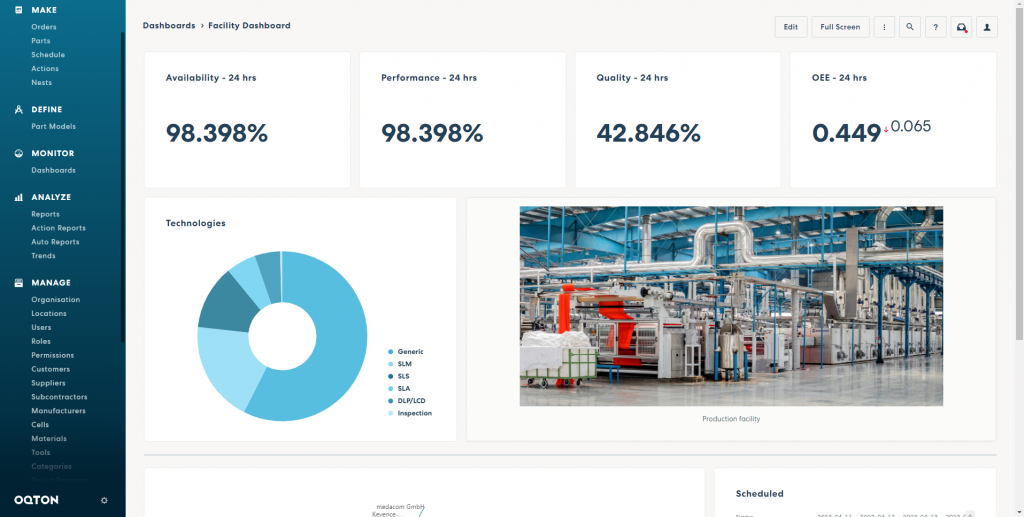
Repeatability issues are inherent in metal Additive Manufacturing due to the number of variables in the process, each of which is a point of vulnerability to creating consistent, high-quality parts on different machines, at different times and in different locations. Next-generation software can help eliminate many of these vulnerabilities by expanding the scope of operational control and unifying the experience.
End-to-end AM solutions provide much greater process transparency, offering automated reports that itemise every step in the metal AM process and help generate insights into improving efficiency and control. Live dashboards allow full transparency into AM machines, post-processing equipment, machine status, schedules, and sensor data, so you can compare productivity between sites or systems to identify trends and analyse root causes of issues. In some cases, you can also leverage data from other enterprise systems, such as ERP, MES, PLM, QMS and CRM for a truly holistic view of operations (Fig. 4).
Most importantly, end-to-end AM platforms will make it possible to fully automate metal AM production, from orders and material management to planning, preparation, and output. As a result, you can expect to execute all process steps more consistently, greatly reduce the risk of human error and ultimately maximise repeatability.
Quality control
Quality control processes are well integrated into existing metal manufacturing workflows. Metal AM, however, requires a slightly different approach as complex parts may need to be CT scanned to measure the internal structure and material characters. This, combined with costly post-processing, means that preventing and detecting errors close to where they happen can bring significant advantages. Next-generation software provides the capabilities necessary to control AM quality without reinventing the wheel.
The ability to monitor all build jobs from one consolidated view is a good example. This feature makes it easy to know the status of all jobs in process, track changes in status, see video feeds of the build platform as jobs progress and keep tabs on live sensor values. All of these machine monitoring capabilities help manufacturers identify potential problems earlier, react quickly and prevent them from happening in the first place.
While this may sound like a conventional MES, these systems are typically configured to execute a single, fixed plan and often struggle to accommodate rescheduling or other real-time process changes. In fact, a MES is often unaware of changes happening on the shop floor because planning, execution and monitoring are isolated and organised in a waterfall. Deviations from the plan are resolved manually, and any attempt to shoehorn the manual changes into the existing workflow creates inefficiencies.
For a truly flexible setup that can accommodate the technologies required for metal AM, manufacturers need a next-generation solution that sources information from various machines and applications in a unified experience that can detect problems and suggest solutions.
During part inspection, for example, additional contextual data could help manufacturers move beyond a basic understanding of how a part is deformed and towards identifying the root cause of deformation as well as how to avoid it within future builds. The quality inspection software should be able to generate reports based on 3D scans of a part flagged for a problem, and the overarching manufacturing software should be able to ingest the production details about the part. With metal Additive Manufacturing parts, manufacturers could determine if a deformation is linked to part orientation or build plate position or see if a certain part of the machine is degrading over time and producing the defect.
When combined with end-to-end automation, all of these quality control measures could help manufacturers significantly reduce the risk of failed builds that compromise the budget and schedule.
Orchestration
Next-generation software not only improves transparency and error prevention, but it also enables manufacturers to rapidly develop and deploy efficient workflows with the help of AI.
What this means is that manufacturers do not have to start from scratch when making the decision to implement metal AM. The software provides a template for metal AM production planning that takes into account a wide range of business requirements and technical capabilities. This will help manufacturers get quick wins right out of the gate and then adopt metal AM for a wide range of parts, use cases and applications over time.
AI-powered orchestration can help to reduce material waste by tightly managing how powders are handled, how build parameters are established, and how quality measurements are applied. This can have a significant impact on total spend.
Cost
The previous examples have the potential to systematically reduce the TCO for metal AM, making the entire enterprise more affordable for manufacturers to implement. Consider the cumulative effect of the following cost reduction opportunities:
- AI engines that eliminate the cost of hiring metal AM specialists, empowering more operators to become productive more quickly
- Cloud platforms that remove the need to pay for IT infrastructure capable of handling the intense computations that metal AM involves
- Security measures that virtually eliminate the risk of priceless IP finding its way into the hands of the competition
- End-to-end process controls that make it easier to identify and resolve inconsistencies from machine to machine and site to site
- Quality control tools that improve error detection and the success rate of every build, resulting in less waste and higher output
- Orchestration techniques that help bridge the gap from current to new workflows and reduce material waste
In isolation, each one of these may not tip the scales far enough in favour of metal AM. But the whole point is that next-generation software delivers all of these benefits in a single solution, which can indeed change the ROI equation in metal AM’s favour.
Author
Dr Ben Schrauwen
SVP & GM
Oqton, Inc
www.oqton.com
References
[1] Precedence Research. https://www.precedenceresearch.com/metal-additive-manufacturing-market
[2] Allied Market Research. https://www.alliedmarketresearch.com/plastic-additives-market
[3] Wohlers Report 2021: 3D Printing and Additive Manufacturing: Global State of the Industry. Referenced here: https://www.metal-am.com/articles/obstacles-to-the-adoption-of-metal-am-by-small-and-medium-sized-enterprises/
Download Metal AM magazine






